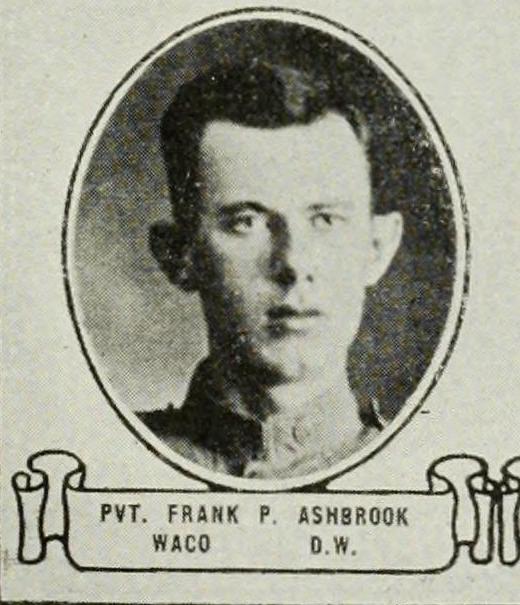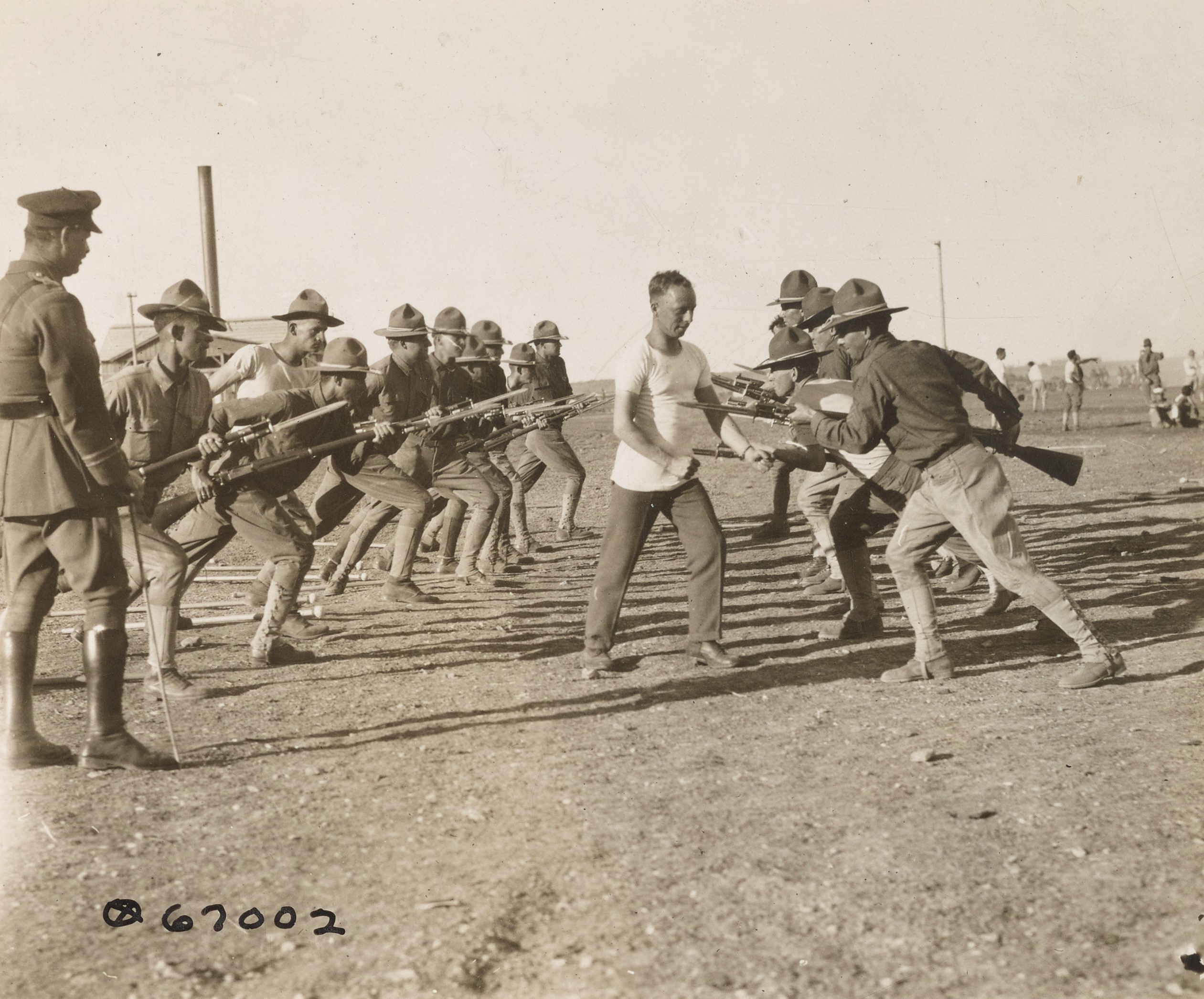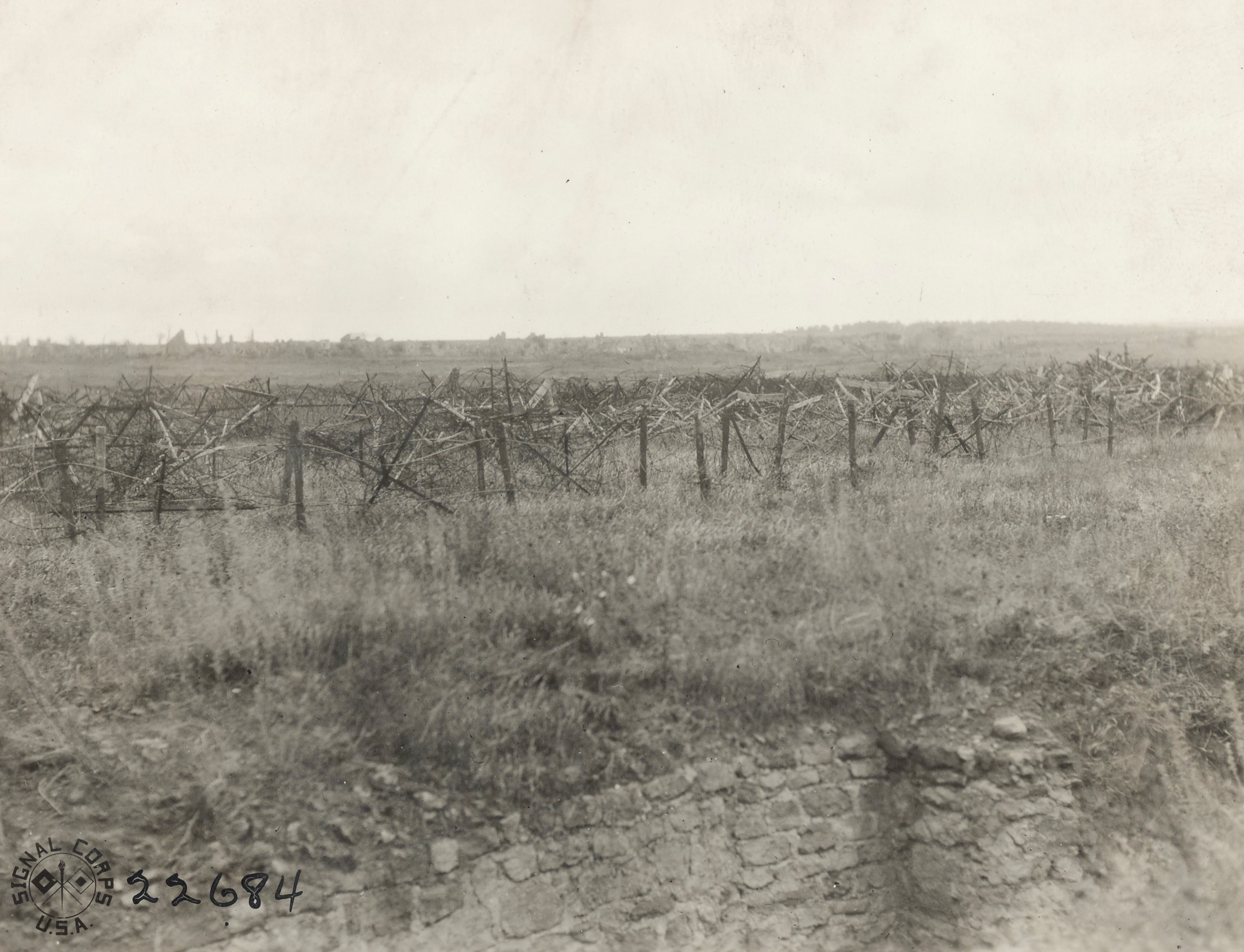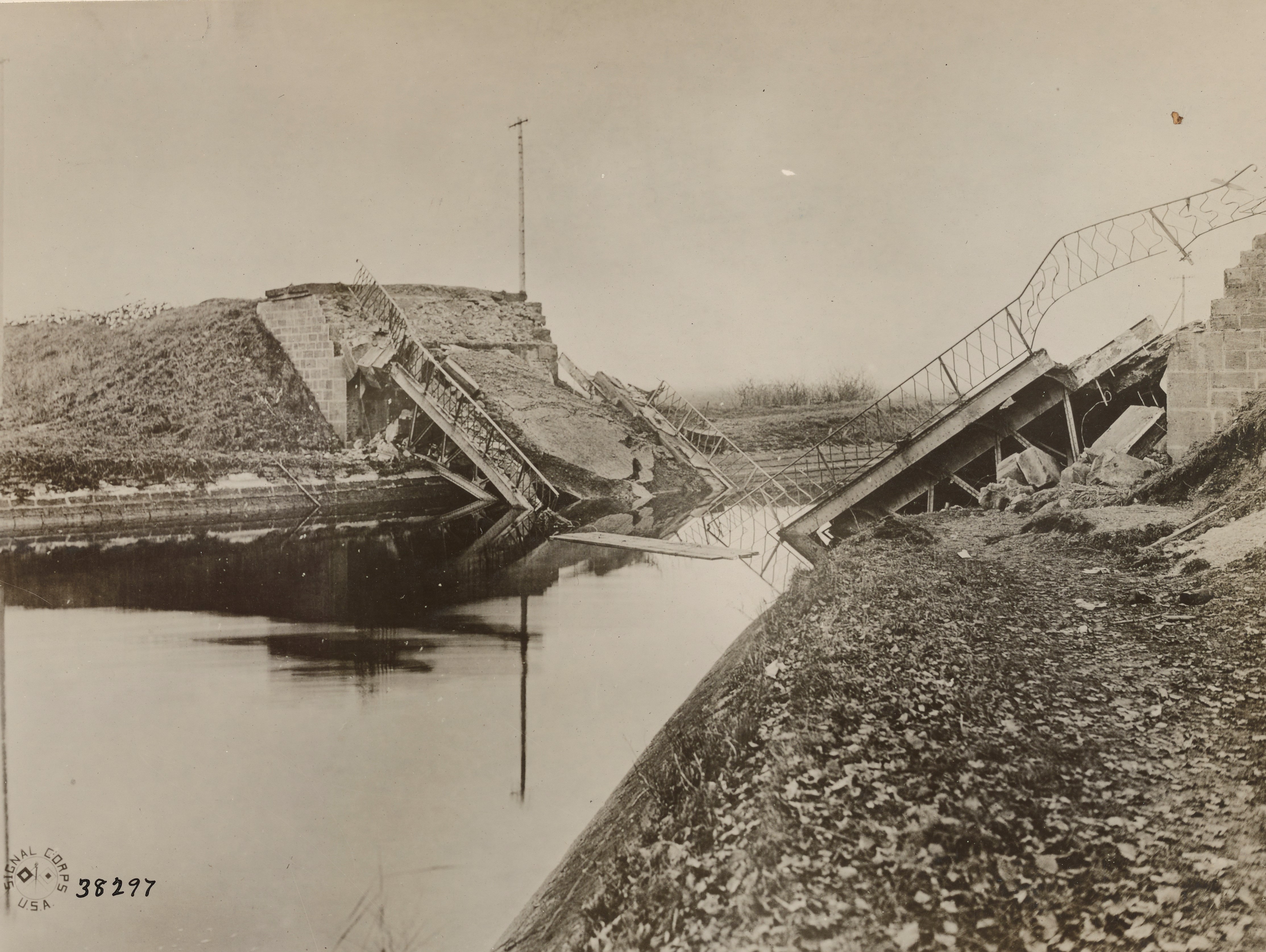Private Frank Paul Ashbrook

- Unit: 90th Division, 360th Infantry Regiment, Company M
- Date of Birth: May 2, 1895
- Entered the Military: June 5, 1917
- Date of Death: November 1, 1918
- Hometown: Waco, Texas
- Place of Death: near Bantheville, France
- Cemetery: Plot 3, Row 16, Grave 128. Meuse-Argonne American Cemetery, Romagne-Sous-Montfaucon, France
Lorena High School
2017-2018
Early Life
Frank Ashbrook was born to a large farming family in Lebanon, Virginia. When he was young, his family moved over one thousand miles to Chillicothe, Texas. They eventually settled permanently in Waco, Texas in 1910. Ashbrook was the eighth of 11 children, and most of them lived in the family’s cozy bungalow on North Eleventh Street in Waco.
After high school, Ashbrook worked with his brother at the Texas Power and Light Company as a pump engineer. Ashbrook was 22 years old when war was declared in April 1917, and he enlisted in June.
Military Experience
Training
Ashbrook joined the 90th Division of the U.S. Army, made up of men from Texas and Oklahoma. They trained at Camp Travis near San Antonio, Texas. This was only a few hundred miles from Ashbrook’s home in Waco and a stop on his journey away from Texas forever.
Theater of War
Ashbrook’s division left Texas in June 1918 and arrived in France 17 days later. There were 6,000 men from the 89th and 90th Divisions who sailed for England aboard the ship Olympic. The journey was difficult; companies were split up and reports of bad food, restless troops and uncomfortable quarters added to the unknown anxiety of potential landmines and enemy submarines. When they finally arrived in England on June 22, it was the first time most soldiers had stepped foot in a foreign country.
As they traveled through France to the front line, the 90th Division’s field diary reported: “…the city is the most beautiful ever seen by most the men…French people are extremely cordial, and very interested.” As they drew closer to the front, the air of sadness and destruction was obvious. “[We] were told by the governor…that there was no cheering for the American soldiers, for the reason that there was sorrow in every home.”
When the 90th Division finally reached the front, they participated in the St. Mihiel drive from September 12 to October 9, 1918. Here they experienced severe shelling and gas attacks. This was their first major offensive for the division and the field diary reported: “Troops displayed excellent morale…[troops] aggressive and highly satisfactory manners.” They were given rest and then called back into battle by the end of the month.
Battle of Meuse-Argonne
Stationed near the town of Bantheville, France, Ashbrook’s company began marching early on the morning of November 1, 1918. They encountered heavy machine gun fire and heavy shelling which caused many casualties. The field report states:
“…Battalion went over the top promptly at 5:30 hour 1st November, Companies L and M closing to within 200 meters of the leading or from wave companies…heavier machine gun fire was encountered from the start…[the enemy] concentrated a heavy fire on the entire battalion…a great many casualties were caused amongst our troops while they were digging in.”
Ashbrook was mortally wounded half a mile from Bantheville and was buried on the northside of Bantheville-Remonville Road. The war ended ten days later.



Eulogy
In February 1919, Ashbrook’s mother, Mrs. J.B. Ashbrook, wrote: “We wish to know further details in regard to his death if it is possible to secure them; also where he is buried and if the grave is marked and how…we are exceedingly anxious…in regard to the conditions surrounding our dear son’s death…we would like to know if he made any last request and we would also like to know the character of his wounds.” The family ultimately chose to have their son re-interred in a permanent cemetery, and Frank Paul Ashbrook was laid to rest in January 1922 in Meuse-Argonne American Cemetery.
In 1929, the Ashbrook family received a letter inviting Ashbrook’s mother to make a pilgrimage to visit his grave in France. Sadly, his mother passed away in 1923. Ashbrook’s father, Joseph Ashbrook, responded to the letter and asked that his daughter be able to go in her place. Unfortunately the government denied his request, and a family visit was not made to his grave.
Although his immediate family was never able to make the journey, his life and sacrifice on behalf of his country has never been forgotten. His selflessness, bravery and courage in the face of the enemy are values that Americans will continue to honor and uphold.
Reflection
Bibliography
360th Infantry Regiment, 90th Division; Records of the American Expeditionary Forces (World War I), Records of Combat Divisions 1918-1919, RG 120 (Box 25); National Archives at College Park, College Park, MD.
Bayonet Practice. Photograph. 1917. National Archives and Records Administration (111-SC-67002-ac). Image.
Doyle, Alfred Cyril, William Mitchell Haulsee, and Frank George Howe. Soldiers of the Great War, Volume 03. Washington, D.C.: Soldier Record Publishing Association, 1920. archive.org/details/soldiersofgreatw03doyl/page/n5.
Frank Ashbrook World War I Burial Case File; Correspondence, Reports, Telegrams, Applications and Other Papers relating to Burials of Service Personnel, Records of the Quartermaster General’s Office, 1915-1935, Record Group 92; National Archives and Records Administration – St. Louis.
Lentz, Lt. M. S. Example of What Germans Did to Bridges in their Retreat from River Meuse. Photograph. November 11, 1918. National Archives and Records Administration (111-SC-38297). Image.
Lentz, Lt. M. S. View of the Thorough Construction of the German Front Line Trenches. Photograph. September 18, 1918. National Archives and Records Administration (111-SC-22684). Image.
War Diaries; Records of the American Expeditionary Forces (World War I), RG 120 (Box 2943); National Archives at College Park, College Park, MD.

